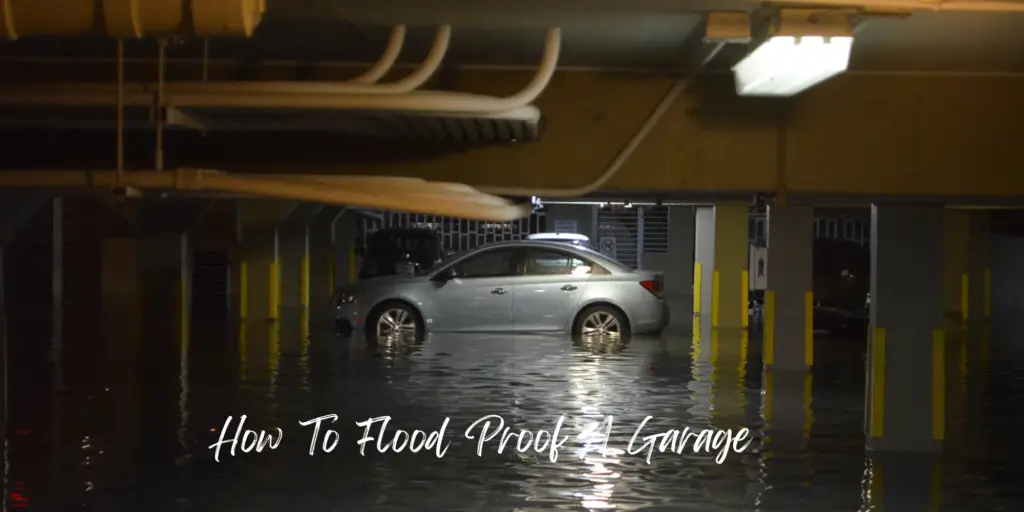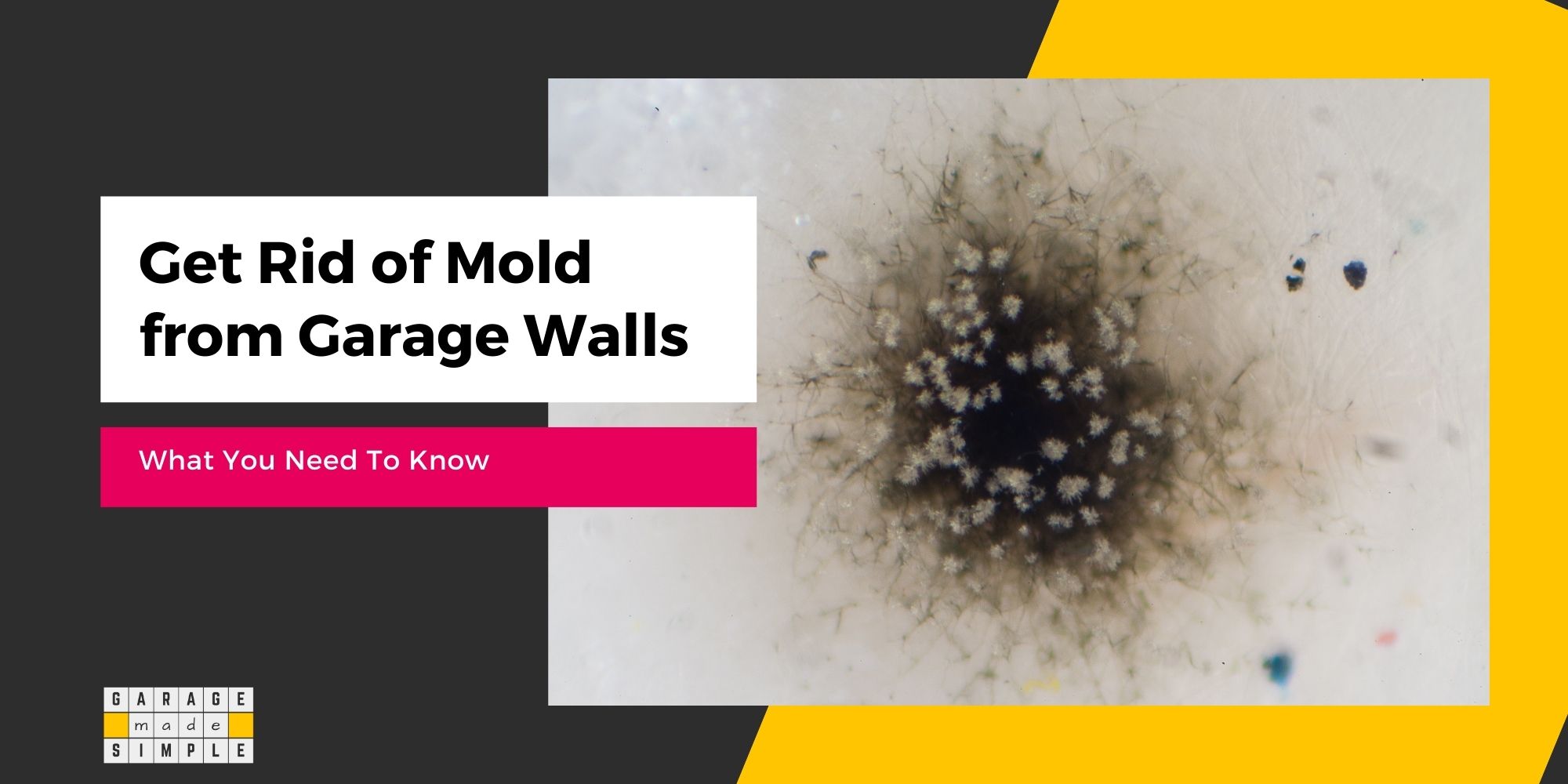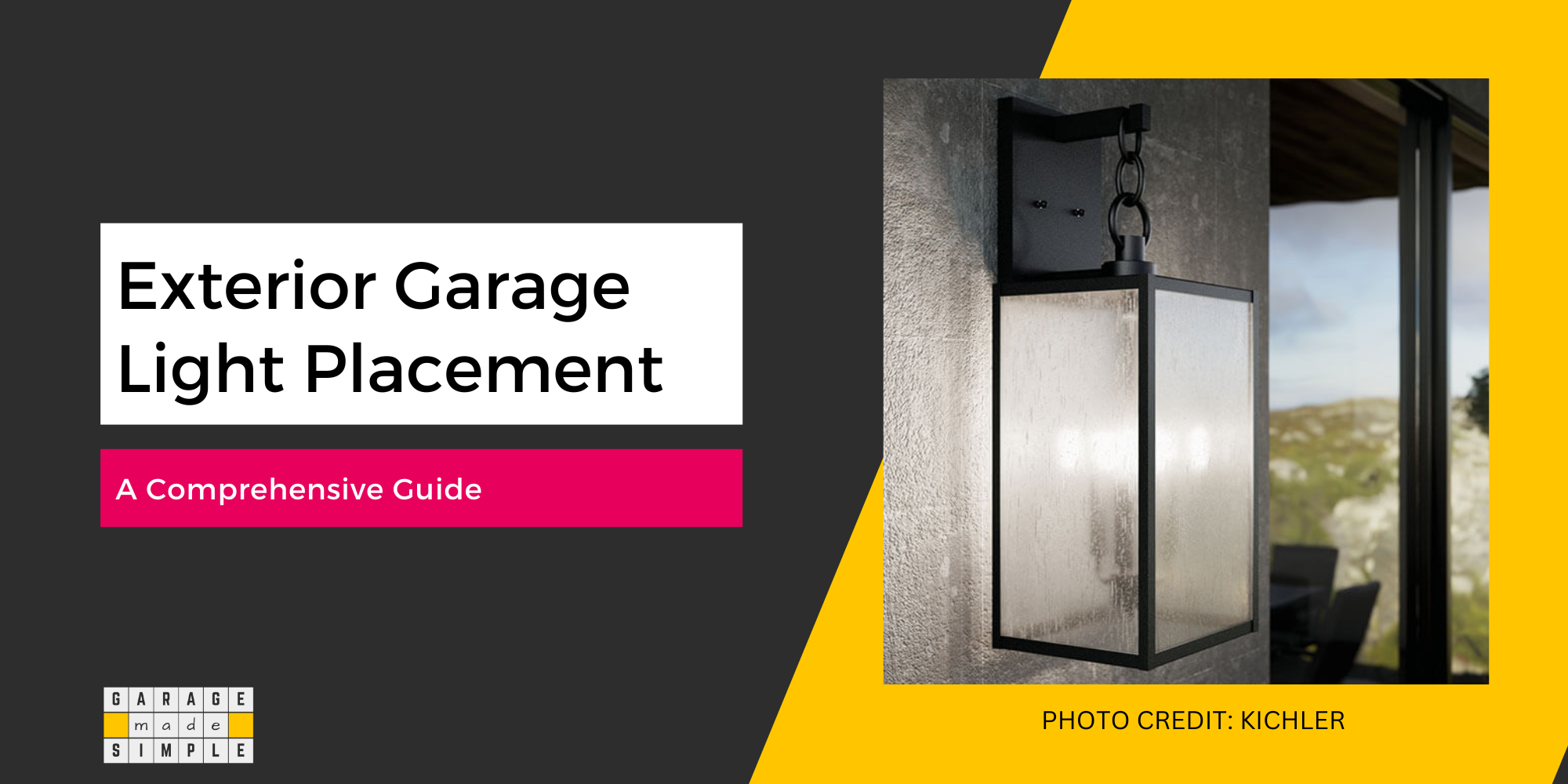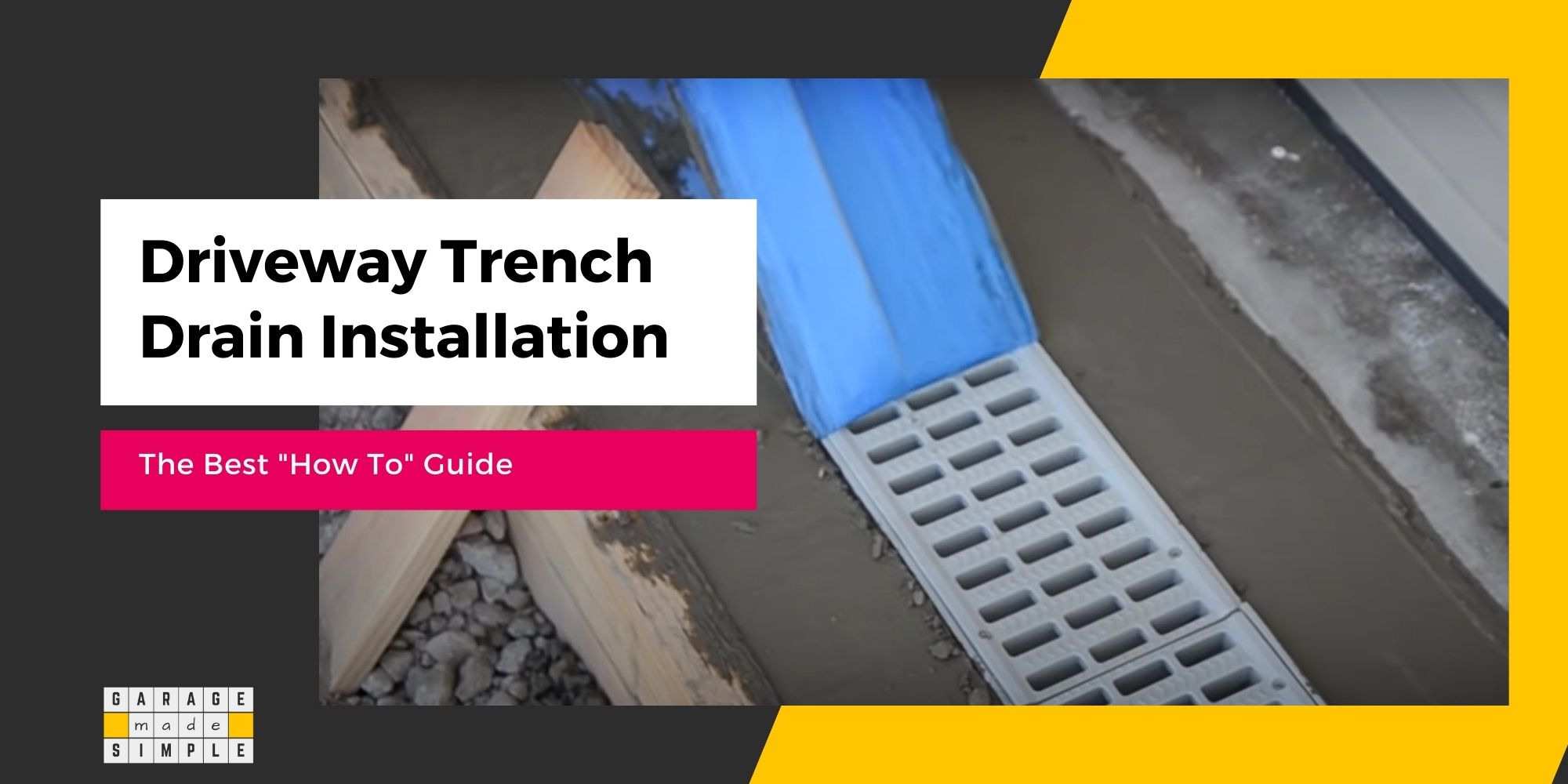9 Effective Ways of How To Flood Proof A Garage
garagemadesimple.com is a participant in the Amazon Services LLC Associates Program, an affiliate advertising program designed to provide a means for sites to earn advertising fees by advertising and linking to Amazon.com . The website is also an affiliate of a few other brands.
You tend not to give much thought to your garage flooding, till it actually floods. Garage floods are more than a nuisance. They can cause damage to cars, machinery and other items stored there. They can turn your garage into a hazard zone. And they certainly have a detrimental impact on the garage structure. So, how to flood proof a garage?

The 9 most effective ways to flood proof your garage are:
Key Takeaways: How To Flood Proof A Garage
| Ways | Description |
|---|---|
| 1. Seal All Leaks & Cracks | Prevent water from entering through any openings in your garage. |
| 2. Clean The Roof Gutters Regularly | Ensure rainwater flows away from your garage and doesn’t pool around the foundation. |
| 3. Check & Replace Garage Door Seals | Keep water from seeping in through the garage door, even when it’s closed. |
| 4. Install Garage Flood Vents & Floor Drains | Allow water to escape from your garage quickly and efficiently. |
| 5. The Garage Should Have Perimeter Drains | Direct groundwater away from your foundation and prevent it from flooding your garage. |
| 6. Use a Water Diverter or Garage Apron Drain | Stop rainwater from flowing towards your garage door and flooding your garage. |
| 7. Ensure Waterproofing of Foundation Wall | Prevent groundwater from seeping into your garage through the foundation walls. |
| 8. Employ Professional Landscaping Techniques | Help divert water away from your garage and prevent flooding. |
| 9. Keep Water Barriers / Sandbags Handy | Be prepared to block water from entering your garage in an emergency. |
All of the above will address one or more of the 4 ways your garage can get flooded. Flood waters can enter your garage through the:
- Driveway
- Roof
- Floor
- Plumbing
Why Is Water Coming in My Garage?
Your garage can get flooded, even without heavy rains. So you need to understand all the ways in which water can get into your garage. Only then can you truly flood proof your garage.
Rainwater Streaming in from the Driveway
Driveways are rarely, absolutely flat. Depending on the lay of the land, a driveway will either slope away from the garage or towards the garage. If the driveway slopes towards your garage door then you must prepare to prevent rainwater from streaming in.
Rainwater Entering through the Roof
Rainwater falling on the garage roof can enter the garage if the roof shingle joints or the shingle itself is cracked or broken. Water can also enter if the gutter is clogged. The overflow will find a way into the garage.
Ground Water Seeping through Foundation Walls
The grade around your garage always has some water. The water table around your garage rises or falls depending on the saturation level of the grade. If your garage is close to a water body such as a river or a lake then the water table can go up, even without rainfall.
Water can seep into the garage, when the water table rises, if the foundation walls are not waterproof.
Leaking or Burst Water Pipes
If you have plumbing in your garage, for say an utility sink, then the plumbing could develop a leak or even burst. This is an internal problem and is not a result of the weather outside. Of course freezing temperatures can be the reason for a pipe to burst.
How To Flood Proof A Garage?
Now that you know that, potentially your garage can get flooded by rainwater from driveway or roof, groundwater through foundation walls or plumbing leaks, what can you do to protect your garage from flooding?
The 9 most effective ways to flood proof your garage are:
1. Seal All Leaks & Cracks
Sealing any leaks in the garage roof, ahead of the rainy season and winter, is critical. Even a small leak or crack will let in large quantities of rainwater in your garage. After a heavy, overnight downpour, you could find your garage floor under inches of water, in the morning.
Take action on the leak as soon as you discover it. Waiting will only make matters worse and costlier. Moreover, do not do a patch up job. It is not unusual that the actual leak spot is not the spot from where the water is dripping into the garage.
You need to follow the steps below:
- Clean the entire roof with a pressure washer.
- Fill visible cracks with mortar or roofing cement.
- Apply a coat of elastomeric sealant or Liquid Rubber.
- Apply another coat of elastomeric sealant or Liquid Rubber.
Use Liquid Rubber Waterproof Sealant, Original Black if a black roof is OK with you. This product is cheaper. Or pick a color of your choice from the 8 off the shelf colors available. The Amazon link for the white color is Liquid Rubber Color Waterproof Sealant, White.
For more details on Liquid Rubber products & applications check out my earlier post 8 Amazing Ways To Use Liquid Rubber In Your Garage!
2. Clean The Roof Gutters Regularly
Roof gutters are there for a reason. They collect rainwater falling on the garage roof and channel it to the storm water drain, through the downspouts. This ensures the area around your garage does not get flooded.
But clogged gutters are, obviously, not much help. Clean the gutters regularly. This becomes even more important in fall, as dry leaves will surely clog them. Do not wait for your garage to flood to discover that in fact the only problem you have is clogged gutters.
3. Check & Replace Garage Door Seals
Rainwater, especially from the driveway, can enter the garage through the garage door. This can happen even when the door is closed, if the door seals are old, brittle and cracked.
To check the condition of the garage door seals, close the Garage Door when sunlight is falling on it. Switch off all garage lights. The seals have cracks if sunlight can come in from any of the four edges of the door.
The Bottom Seal and the Bottom Threshold Seal, work in conjunction to seal the lower edge of the garage door, when it is closed. To flood proof your garage, make sure the Bottom Threshold Seal is tall enough. I highly recommend:
Garadry 2″ ‘GARADAM’ Garage Door Threshold Seal Kit (10’3″) | Black/Yellow, Vinyl | Includes Adhesive4. Install Garage Flood Vents & Floor Drains
As per code the garage floor must slope towards the garage door or towards a drain. The 2018 International Residential Code (IRC) Section 309.1 stipulates:
Garage floor surfaces shall be of approved noncombustible material. The area of floor used for parking of automobiles or other vehicles shall be sloped to facilitate the movement of liquids to a drain or toward the main vehicle entry doorway.
The code does not state the pitch required but, a pitch of ¼” for every foot is the commonly accepted norm. This garage slope ensures smooth flow of water towards the garage door or the garage floor drain as the case may be.
However, this pitch is not going to be of much help if rainwater is gushing in through the garage door. You must use one of the following two solutions.
Flood Vent
Flood vent are openings in the lower end of the garage wall. They do not stop the water from entering the garage. Instead they facilitate the flow of water through the garage. This saves the items in the garage and the garage structure from excessive damage.
Floor Drain
The flood waters that enter the garage are captured by the drain inlets and channeled out of the garage, either to a storm water drain or a drain to daylight.
5. The Garage Should Have Perimeter Drains
The perimeter drains are different from the garage floor drains. The perimeter drains are in fact outside the garage and run around the entire perimeter of the garage.
Perimeter Drains (aka French Drains, aka Weeping Tiles) around your garage collect the groundwater when the water table rises and diverts it to a safe discharge point. They protect your garage foundation from damage and prevent groundwater from flooding the garage.
6. Use a Water Diverter or Garage Apron Drain
The perimeter drain helps in diverting away groundwater from the grade around the garage. But you also need to trap and divert the flow of rainwater from the driveway headed towards the garage door.
Traditionally these drains are wide and covered by steel grates. The steel grate covers help collect the water while preventing debris from flowing into and clogging the drain.
Without such an arrangement rainwater or water from the melting snow on the driveway, will come rushing in and flood the garage. The drain will trap the water before it happens and safely divert it to the storm water drainage system.
7. Ensure Waterproofing of Foundation Wall
The perimeter is helpful in diverting the groundwater before it reaches the garage foundation. Nonetheless, you still want to ensure that the foundation wall is waterproofed.
To find out more check out my earlier blog post The Best Way of How to Waterproof Your Garage Walls.
The best product for waterproofing the garage foundation wall is Liquid Rubber Foundation and Basement Sealant – Indoor & Outdoor Use – Easy to Apply – Waterproof Coating – Black, 5 Gallon.
8. Employ Professional Landscaping Techniques
Employing professional landscaping techniques can not only make your yard look pretty. It can help flood proof your garage and your home. Some simple techniques are:
- Ensure the ground slopes away from the garage.
- Plant trees and shrubs that prevent soil erosion. Grass helps too!
- Use mulch in the garden. Mulch helps to keep soil in place and holds rainwater.
- Add drains along the driveway.
9. Keep Water Barriers / Sandbags Handy
The water barriers or sandbags can come in handy if the flooding is unexpected or your flood prevention measures failed. Sandbags are easy to make and you can keep them in the yard.
However, a more convenient alternative is Quick Dam – QD1224-6 Water Activated Flood Bags. The special features are:
- Water Activated Polypropylene Flood Bags
- Grows to 3.5in high in minutes once wet
- Compact & Lightweight, stores away until needed
- Use to control, contain & divert flood water
Thank you very much for reading the post. I do hope you found it informative and useful.







